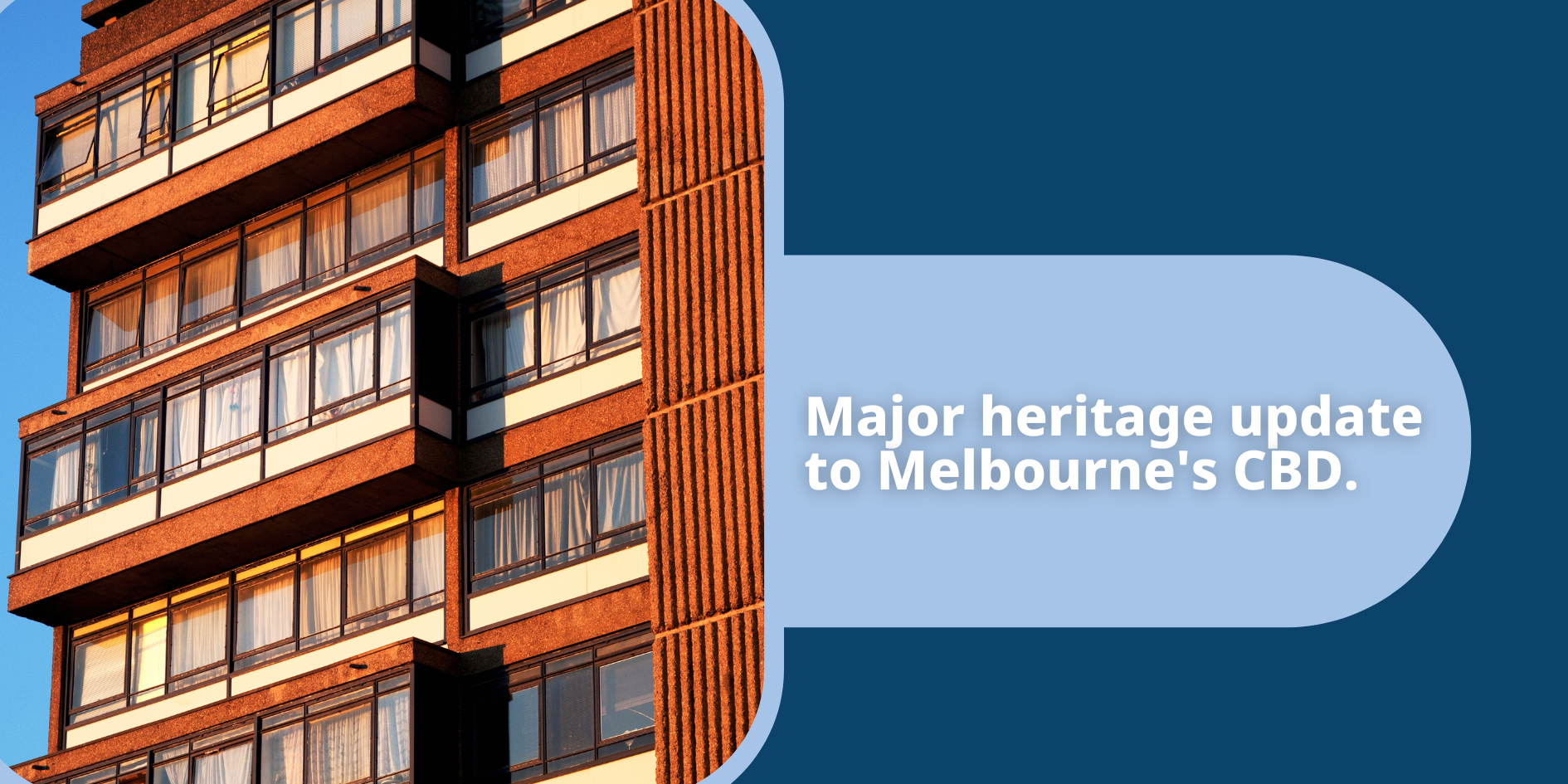On September 9th 2022, the Minister for Planning formally gazetted Amendment C387 into the Melbourne Planning Scheme. The amendment was made in response to the March 2022 iteration of the Hoddle Grid Heritage Review (2020) and formally recognises 121 additional buildings and five precincts as heritage listed.
Further to this, the amendment will result in several changes to the Local Planning Scheme, in particular, to Clauses referring to Heritage controls within the CBD.
Purpose
In their explanatory report (found here), Council contend “the amendment is required to apply or update the Heritage Overlay on a permanent basis for the places in the Hoddle Grid study area to ensure that their heritage values are recognised and protected”.
Similarly, this Planning Scheme update will aim to ensure that any new development considers, conserves and enhances the newly listed buildings as significant assets to the City’s history and character.
Striking a balance
Controversy has sparked surrounding the classification of several newer buildings (built post WW2) under the same heritage principals as the many older buildings adorning Melbourne’s streets. Large multi-storey buildings along Collins Street, to name a few, consist of far more modern materials such as concrete, glass and steel framing, and present as contemporary places. Many industry leaders are troubled by Council’s decision as it is viewed that these buildings should not reflect the same heritage status as other historic buildings of significance (such as Flinders Street Station).
Council claim that heritage should not be defined under one architectural style from one era, rather, it should be preserved as a viewing of the way the city has evolved over time, from mid-19th century settlement to a post-war economic boom. The amendment aims to capture this notion through the provision of heritage controls to some ‘newer’ buildings.
The amendment also considers the scenario where, in years to come, a lack of protection would result in a large disparity between one-hundred-plus-year-old buildings and brand-new developments. Council considers that a preferred future character outcome be one where select buildings from all eras are retained to provide insight into the historical architecture and use of prominent buildings and places within the CBD.
Amidst the current controversy, there is no doubt the retention of historic city fabric will play a role in shaping the character of the City as Melbourne moves further into the 21st century. The key to balance, that despite of the heritage status of buildings, is to ensure that the planning system encourages the maintenance and upgrade of buildings in an appropriate manner to warrant technological innovation and the needs of residents, consumers and workers who utilise these buildings on a daily basis.
It is the role of professional town planners from both the public and private sectors to collaborate and focus on creating positive outcomes for not only the City, but to all whom call it home.
